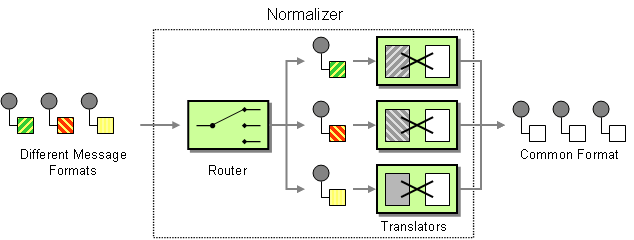Fuse 6 is no longer supported
As of February 2025, Red Hat Fuse 6 is no longer supported. If you are using Fuse 6, please upgrade to Red Hat build of Apache Camel.Este conteúdo não está disponível no idioma selecionado.
9.3. Normalizer
Overview
Copiar o linkLink copiado para a área de transferência!
The normalizer pattern is used to process messages that are semantically equivalent, but arrive in different formats. The normalizer transforms the incoming messages into a common format.
In Apache Camel, you can implement the normalizer pattern by combining a content-based router, which detects the incoming message's format, with a collection of different message translators, which transform the different incoming formats into a common format.
Figure 9.3. Normalizer Pattern
Java DSL example
Copiar o linkLink copiado para a área de transferência!
This example shows a Message Normalizer that converts two types of XML messages into a common format. Messages in this common format are then filtered.
Using the Fluent Builders
In this case we're using a Java bean as the normalizer. The class looks like this
XML configuration example
Copiar o linkLink copiado para a área de transferência!
The same example in the XML DSL
